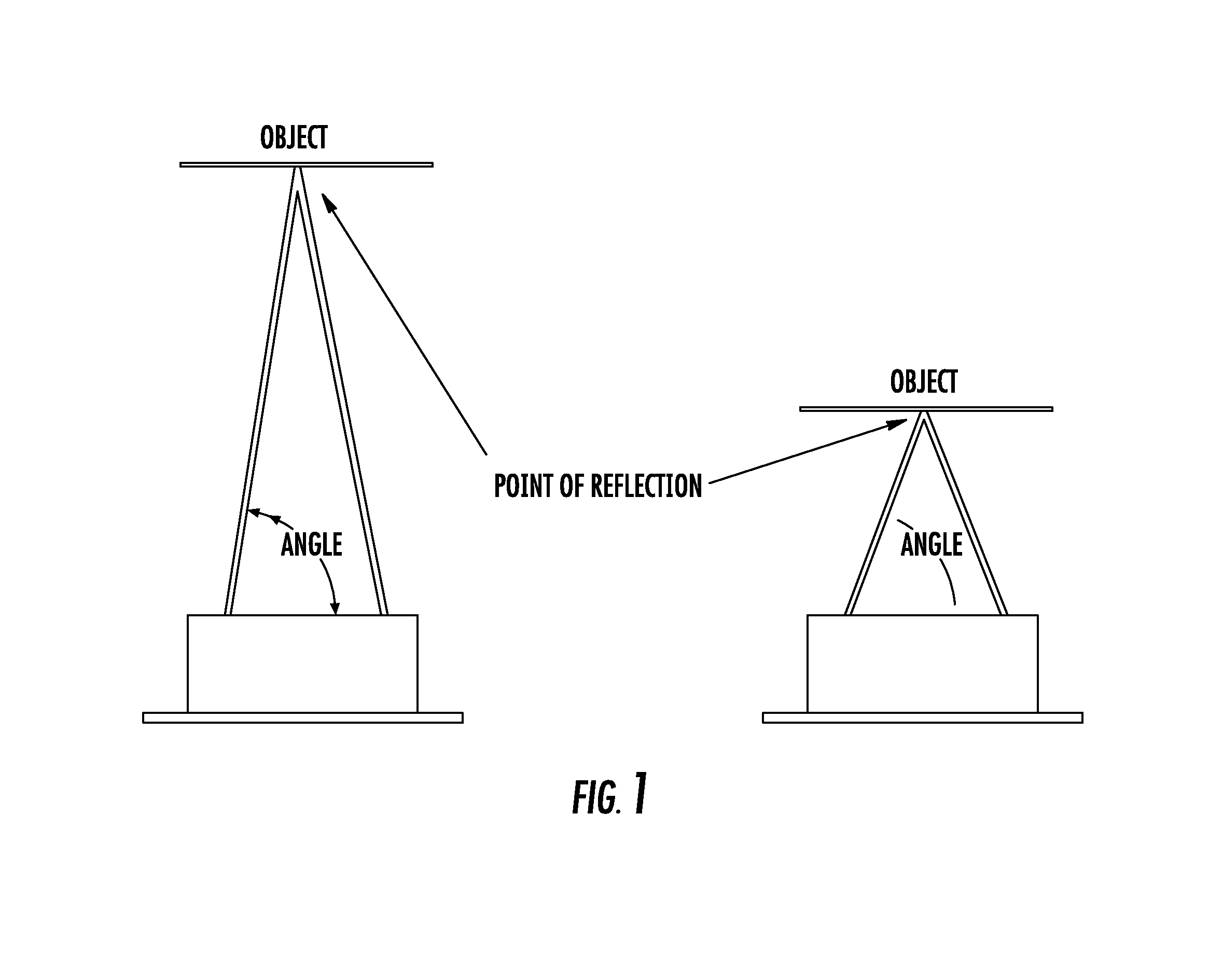Proximity sensor and method of sensing a distance of an object from a proximity sensor
a proximity sensor and distance sensor technology, applied in the field ofproximity sensors, can solve the problems of not being fully suitable for commercial applications, extremely complicated, expensive, etc., and achieve the effect of simple and low cost architectur
- Summary
- Abstract
- Description
- Claims
- Application Information
AI Technical Summary
Benefits of technology
Problems solved by technology
Method used
Image
Examples
Embodiment Construction
[0017]This disclosure deals with the possibility to use photons randomly emitted in dark conditions from reverse biased GMAP arrays with multiplexed configuration of the microcells electrical contacts (e.g. the Silicon Photomultiplier) to create a monolithic and compact proximity sensor, adapted to operate in high dark environments. In this proximity sensor, the array of GMAP photodiodes is reverse biased above the breakdown voltage such as to make it act at the same time as a detection unit and as illumination unit.
[0018]Phenomena of photon emissions by reverse biased p-n junctions have been reported for the first time in 1955. The article by Nader Akil et al, “A multimechanism model for photon generation by silicon junctions in avalanche breakdown”, IEEE Transactions on Electron Devices, vol. 46, No. 5, May 1999, provides a survey on the possible mechanisms for the photon emission due to avalanche phenomena in reverse biased p-n junctions.
[0019]The presently disclosed proximity se...
PUM
 Login to View More
Login to View More Abstract
Description
Claims
Application Information
 Login to View More
Login to View More - R&D
- Intellectual Property
- Life Sciences
- Materials
- Tech Scout
- Unparalleled Data Quality
- Higher Quality Content
- 60% Fewer Hallucinations
Browse by: Latest US Patents, China's latest patents, Technical Efficacy Thesaurus, Application Domain, Technology Topic, Popular Technical Reports.
© 2025 PatSnap. All rights reserved.Legal|Privacy policy|Modern Slavery Act Transparency Statement|Sitemap|About US| Contact US: help@patsnap.com



